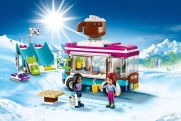Last evening, I attended a Graduate Fog event called “Rethinking fair access: How level is your playing field really?” The keynote speaker was Dr Ger Graus from KidZania talking about the impact early learning has on the employment aspirations shown by young people today – in a survey of many thousands of young people, they found girls still gravitate towards traditions female job experiences and vice versa.
Clearly, the way children are parented impacts on their learning, but so do the toys they play with. Because of Dr Graus’ talk, I reviewed an article I wrote about Lego in June 2014 and its lack of gender neutral building sets. This morning, I revisited the Lego website to find not a great deal has changed. Perhaps there is greater evidence of female characters, but have they changed their gender roles – no!
I went to the “truck” section and opened the links to the forty-four sets in this section, the clear majority being action sets, nearly all with male characters and female ones hardly in evidence.
But wait, girl sets are there too. “Snow Resort Hot Chocolate Van”, “Flo’s Café” or even “Mia’s Organic Food Market” – no great adventure here, but plenty of pink and bright colours. How are Lego informing the long-te rm ambitions of their girl audience? The “Jungle Exploration” or “Mining Experts Site” sets are clearly designed and marketed to their boy users, without pink or pastel shades in evidence.
rm ambitions of their girl audience? The “Jungle Exploration” or “Mining Experts Site” sets are clearly designed and marketed to their boy users, without pink or pastel shades in evidence.
Gender behaviours and responses are learnt, at home, in the classroom and in the media. We all, as individuals or organisations, have a responsibility in helping to create a ‘level playing’ for our young people growing up into the tomorrow’s workforce.
Come on Lego (and many others), it’s time to get your act in order.
